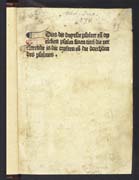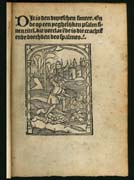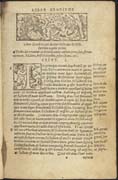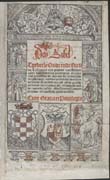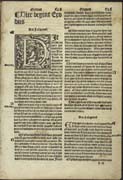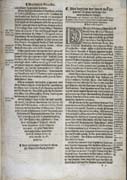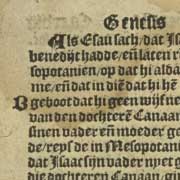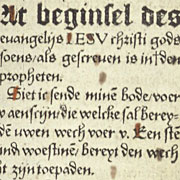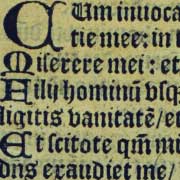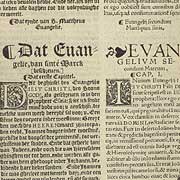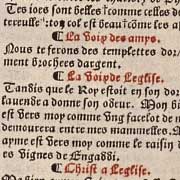Biblia Sacra
Bibles printed in the Netherlands and Belgium
Bibles as physical objects
I. Title page
A remarkable evolution from the early years of the printing press is the rise of the title page. Biblia Sacra shows the development within bibles:
5. Bible. Antwerp, Jacob van Liesvelt, 1526. vol. 1: a1r
And finally advertising language was used to sell as many copies as possible. On this title page just the simple words 'Dat Oude ende dat Nieuwe Testament' (=The Old and the New Testament) were sufficient, since it was the first complete printed bible in common Dutch.II. Layout
While the first printed books still resembled manuscripts, editions printed after 1520 were increasingly developing their own characteristics. Printers started to experiment with the layout in order to achieve more clarity. New elements in the layout of the text were introduced and eventually typical features of manuscripts were abandoned. By increasing the legibility of texts, printers tried to meet the wishes of a new reading public that was not used to reading large pieces of text.
2. Bible. Antwerp, Jacob van Liesvelt, 1526. vol. 1: d3r
All handwritten structuring has disappeared. Individual sentences are not marked by rubrication, but larger units of the text are divided into paragraphs. Larger type is used for the book heading. Typographical differentiation could create a much more elaborate hierarchy in the text.III. Printing types
Traditionally the vernacular bible was printed in gothic, the typeface of the people. The Latin bible was printed in roman from ca. 1525 onwards. To print bibles, various gothic and roman types were used, sometimes even within one edition.

